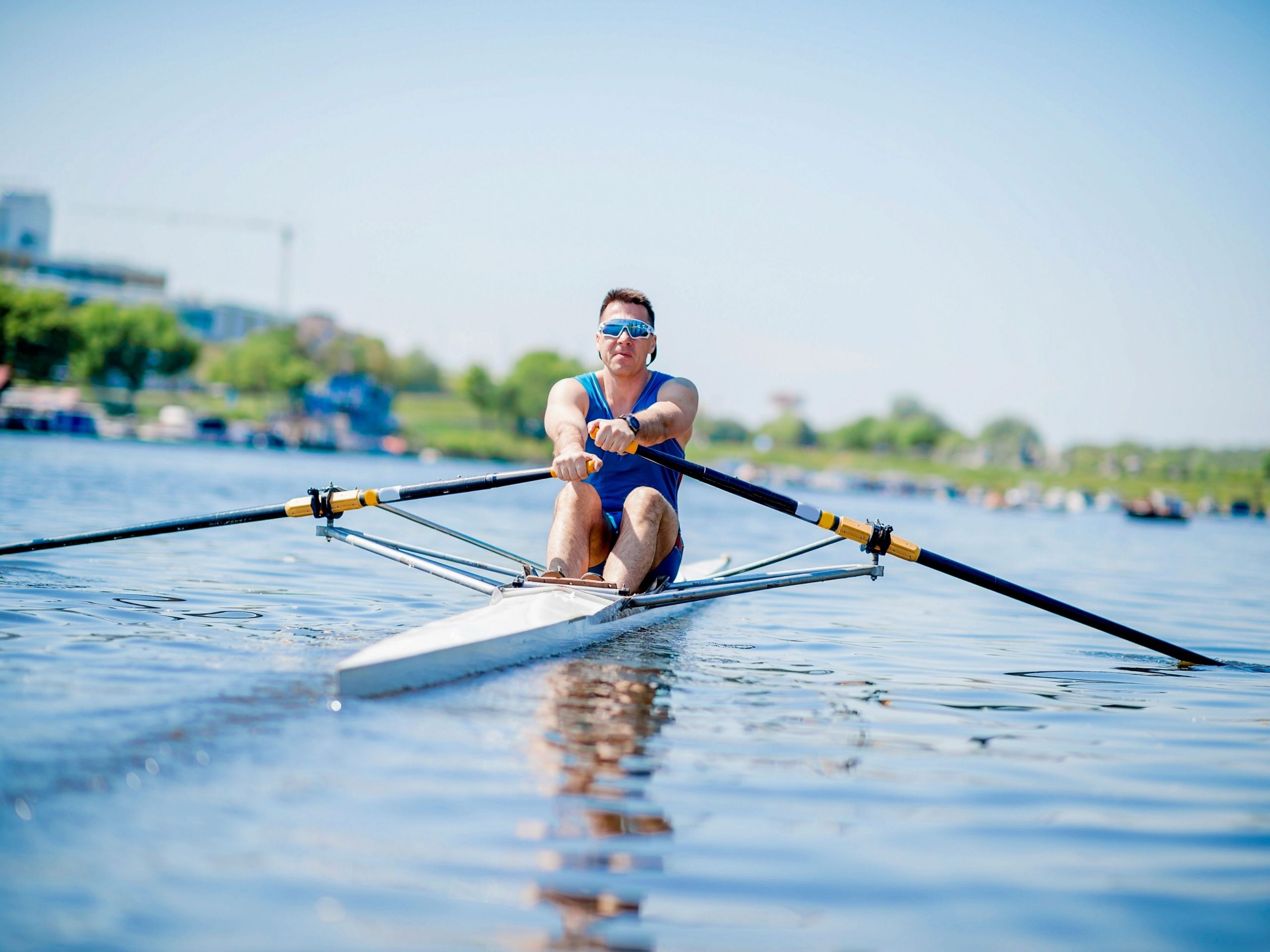The challenge of rowing
The types of injuries that are common in rowing occur as a result of poor preparation. Rowing is great for all-around fitness. However, it is a challenge in terms of the complexity of the technique and the physical demands it puts on the body.
Inspired by the annual boat race, many people take to rowing for the first time. But the crews of Oxford and Cambridge make it look so much easier than it is. You can spot a novice rower in the gym because their rowing will be all arms and very little legs. It’s an inefficient way to row.
The most common injury in rowing is to the lower back. But other injuries that affect rowers on a regular basis affect the ribs, knees, wrists and shoulders.
Let’s see what can be done to help prevent them…
Preventing common rowing injuries – the technique
The good news is that the highest proportion of rowing injuries are overuse injuries. So if you are new to the sport, whether indoor or outdoor, it is good to know it is relatively safe.
That being said, it is good to get some advice on technique very early on. If you pick up bad habits in your technique, they can be difficult to shrug off. And because rowing involves repetitive and continuous motion poor form will quickly put a strain on your body.
There are two parts to a rowing stroke. These are called the drive and recovery. All the hard work is done during the drive phase.
As you push out (the drive phase) the sequence is legs, then the body and then arms. Keeping your arms straight initially, you first extend the legs and then tilt the body slightly. Only after that do you pull the arms towards the body.
The recovery phase is the opposite of the drive. The arms extend first, then the body tilts forward slightly. And only then do the legs bend to bring you back to the start position.
To further refine your technique, you should look to keep the elbows close to the side of the body. In addition, your wrists should be kept flat (like a good typist), not bent to try and gain extra force. And it helps to keep the shoulders down and relaxed.
Other factors that help prevent injury
- Because the rowing stroke is a power move and can be quite forceful, warming up properly is essential. Never try and do a time trial on the indoor rower without a thorough warm up. You need to get the joints and tendons warm and the heart rate slowly elevated, before pushing too hard.
- On an indoor rowing machine, there is a setting at the side called a damper. To help reduce strain, set the damper to a low setting such as 3 or 4 (it goes up to 10).
- Increase the intensity of your rowing slowly over time. Do not try and row at full tilt until you are experienced and have good technique.
A final word
Rowing can be highly enjoyable. It can be highly addictive too. Once you start rowing on a regular basis, it can create tension in certain parts of the body. Especially areas like the trapezius muscles of the upper back or the IT band running down the side of the leg.
Learning appropriate post rowing stretches will help relieve muscle tension. And regular massage is also a great way to help avoid common rowing injuries.
We hope this information is useful for you. If you have any questions about our treatments, please contact us. You can find us in Mill Hill Broadway and Islington. If you like this blog, please share! We are always happy to help.
We are always happy to help.




